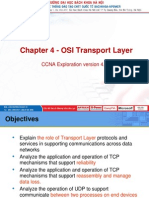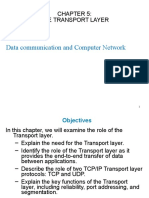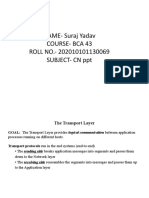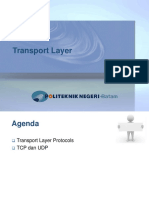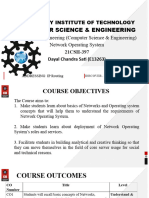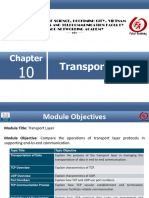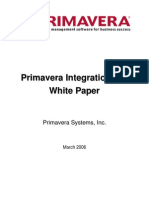0% found this document useful (0 votes)
50 views12 pagesTransport Layer: Computer Science Department
The transport layer provides for segmentation of data and control of reassembly. Its responsibilities include tracking communication between applications, segmenting/reassembling data, and identifying applications via port numbers. The main transport protocols are TCP and UDP. TCP provides reliable, connection-oriented communication using three-way handshake for connection establishment and four-step termination process. UDP supports low overhead but unreliable connectionless data delivery.
Uploaded by
laithsdCopyright
© © All Rights Reserved
We take content rights seriously. If you suspect this is your content, claim it here.
Available Formats
Download as PDF, TXT or read online on Scribd
0% found this document useful (0 votes)
50 views12 pagesTransport Layer: Computer Science Department
The transport layer provides for segmentation of data and control of reassembly. Its responsibilities include tracking communication between applications, segmenting/reassembling data, and identifying applications via port numbers. The main transport protocols are TCP and UDP. TCP provides reliable, connection-oriented communication using three-way handshake for connection establishment and four-step termination process. UDP supports low overhead but unreliable connectionless data delivery.
Uploaded by
laithsdCopyright
© © All Rights Reserved
We take content rights seriously. If you suspect this is your content, claim it here.
Available Formats
Download as PDF, TXT or read online on Scribd
/ 12


